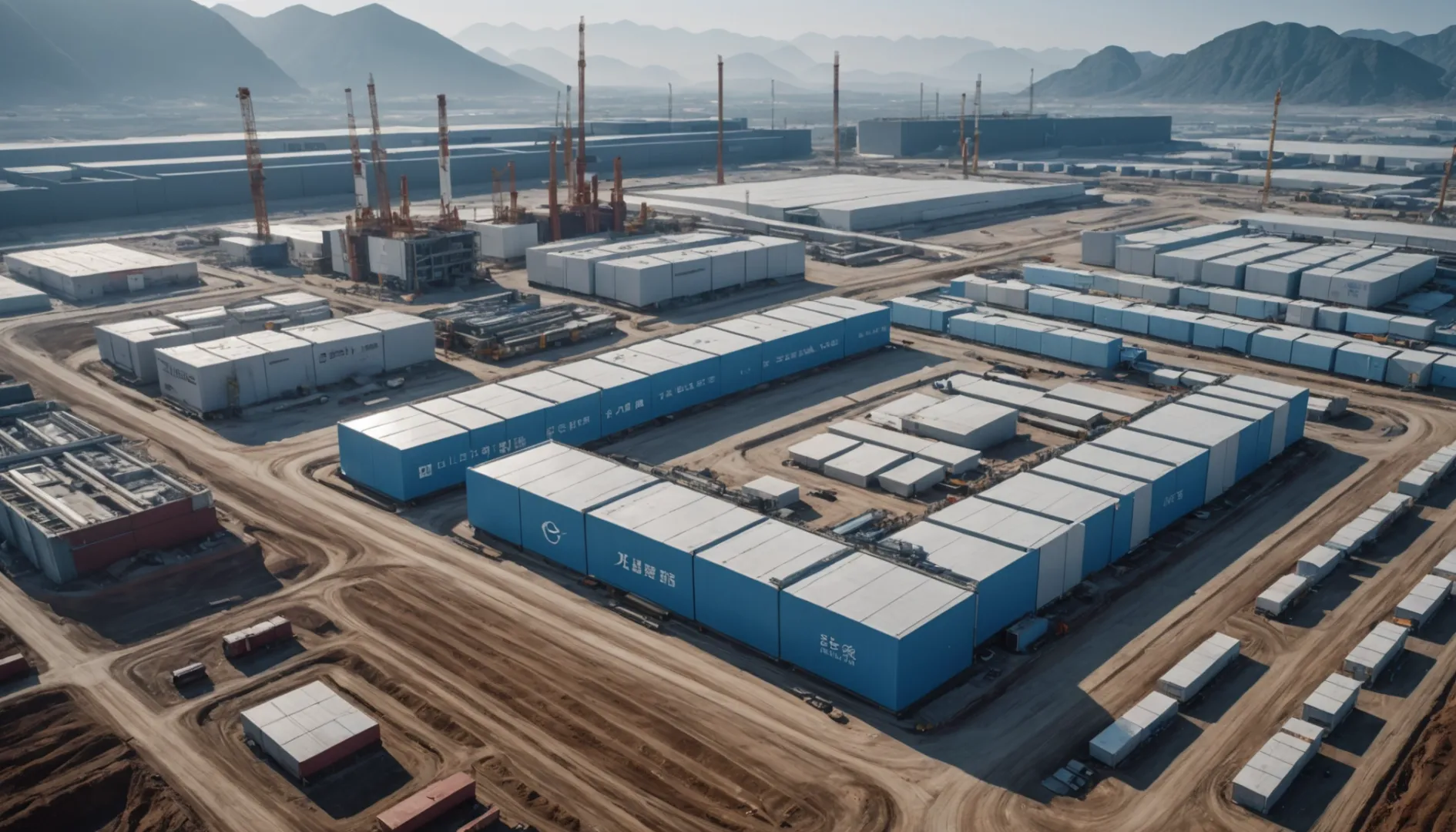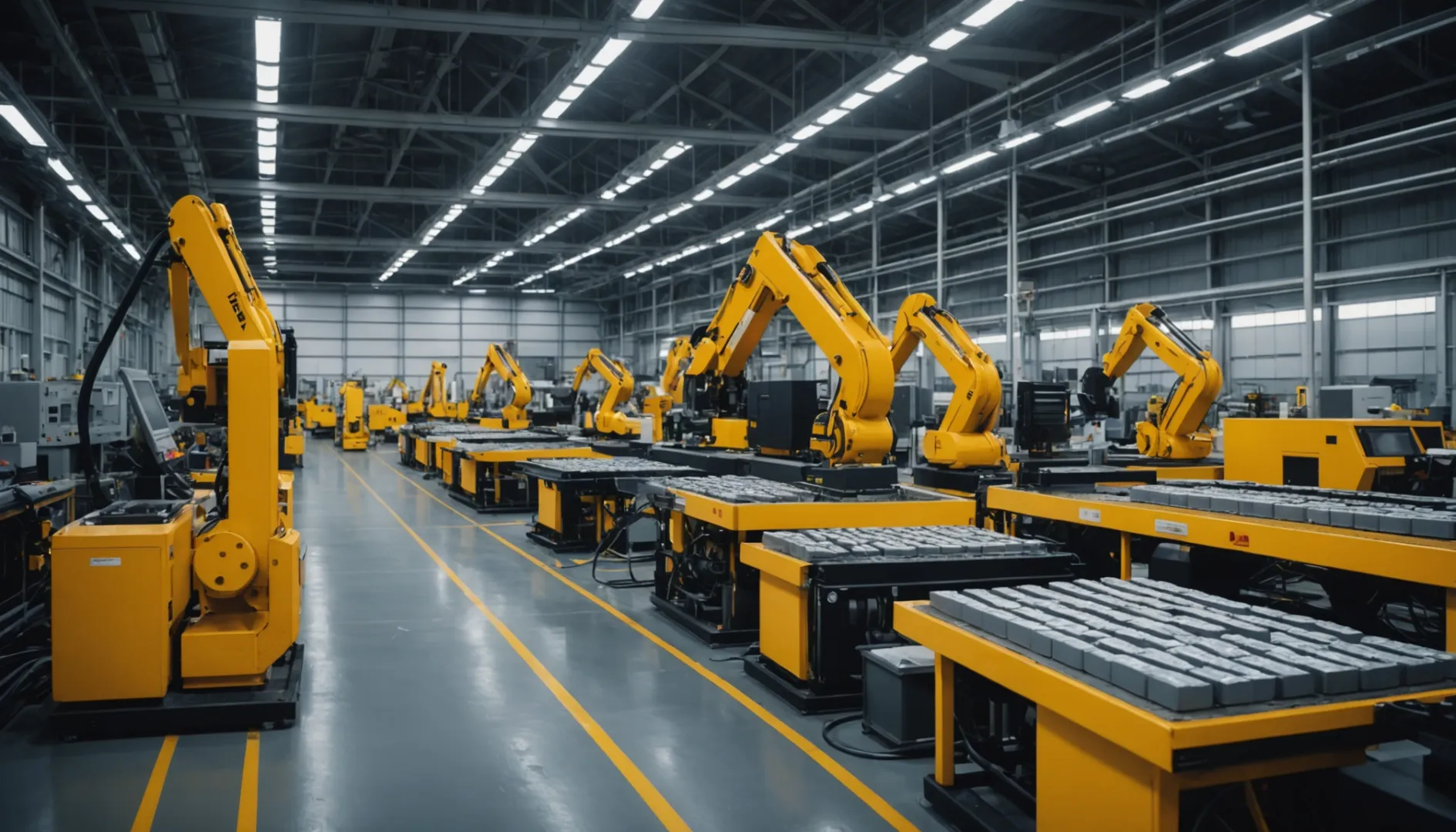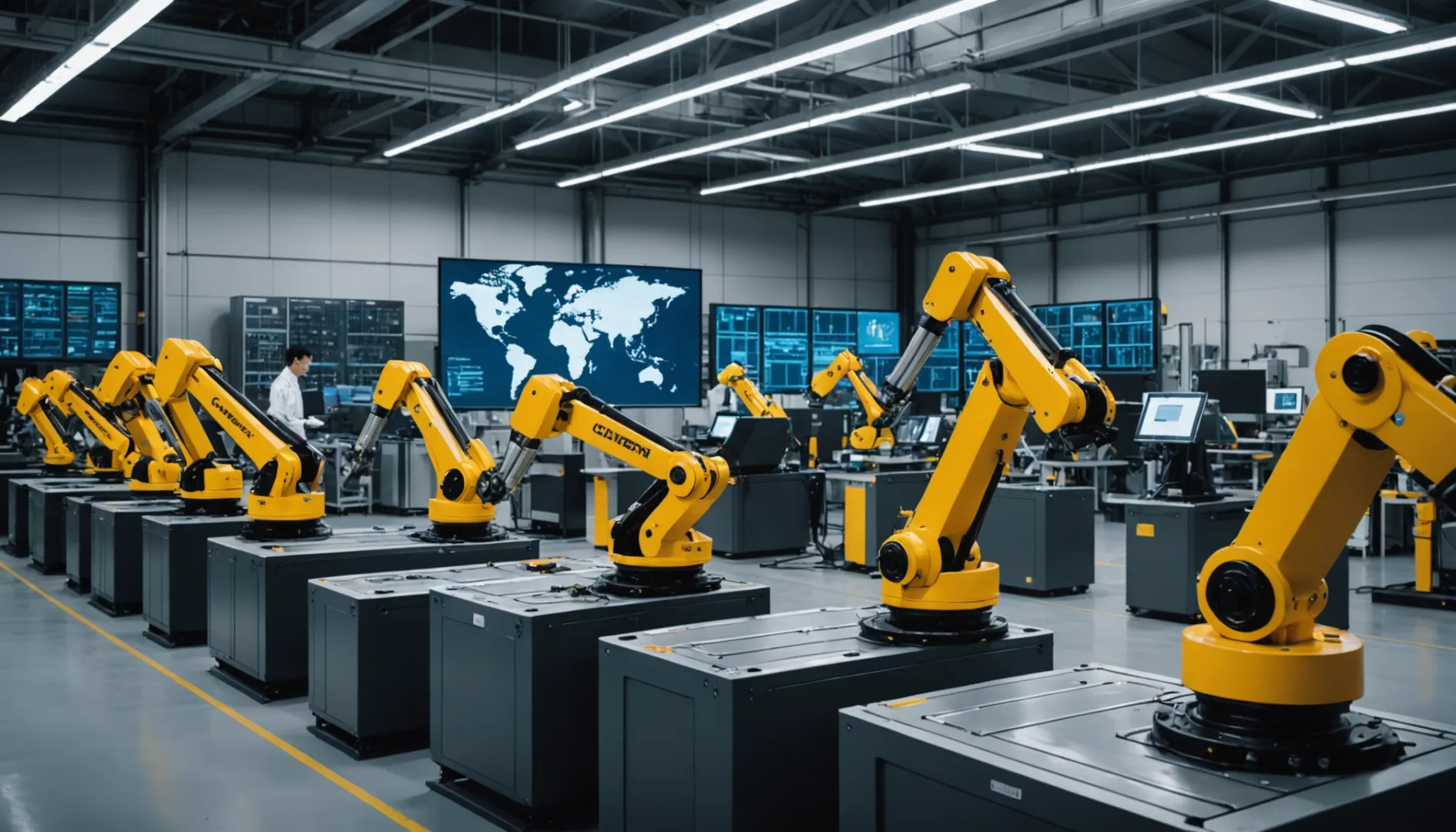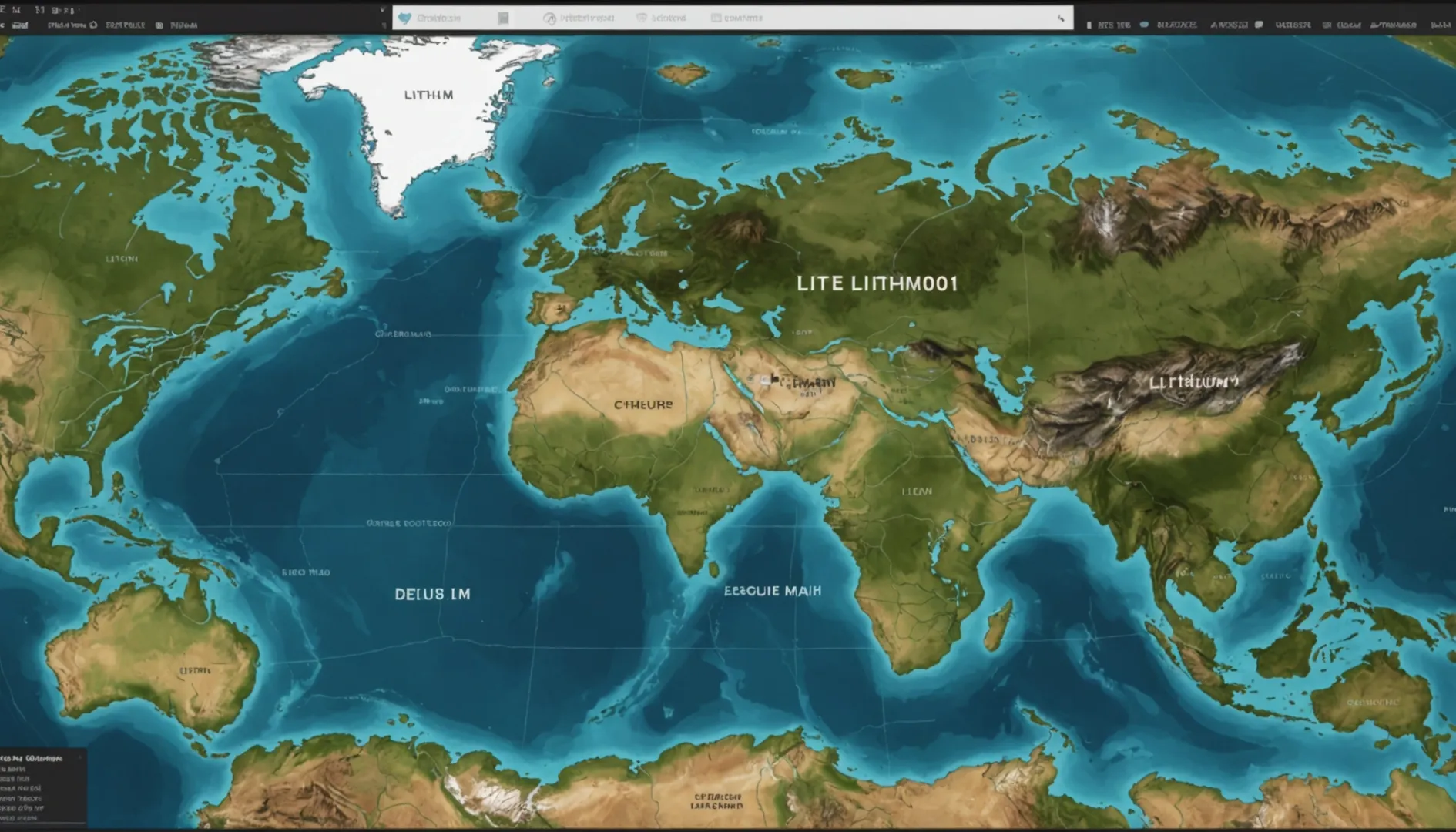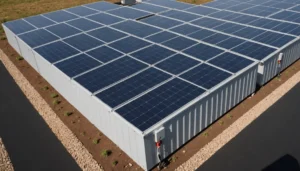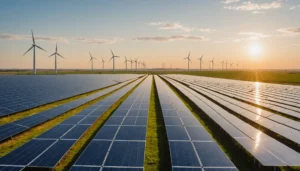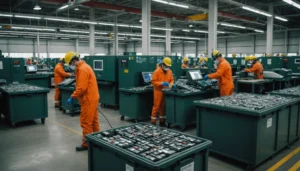Ever wonder who’s leading the lithium race as we charge into the electric vehicle era?
China consumes the most lithium worldwide, largely because it dominates the production of lithium-ion batteries critical for electric vehicles and gadgets we can't live without.
I remember first hearing about lithium's importance in a documentary and being fascinated by how this element fuels our modern lives. While China tops the list due to its massive battery manufacturing, exploring how different regions drive demand reveals a lot about our tech-driven world. Let's dive into the whys and hows of this fascinating market.
China consumes 77% of global lithium.False
China produces 77% of lithium-ion batteries, not consumes 77% of lithium.
EVs drive the majority of lithium demand growth.True
Electric vehicles significantly increase lithium demand due to battery needs.
Why is Lithium Demand Increasing Worldwide?
I recently found myself diving deep into why lithium is suddenly the talk of the town, and boy, what a journey it’s been!
Lithium demand is skyrocketing worldwide because it's the powerhouse behind electric vehicle (EV) batteries, energy storage systems, and gadgets we use every day. As EVs and renewable energy continue to rise in popularity, the thirst for lithium-ion batteries grows, fueling massive consumption across industries.
The Rise of Electric Vehicles
Let me take you back to when I first considered buying an electric car. I was amazed by the shift happening around me—people trading in their gas-guzzlers for sleek, silent EVs. This transition is a key driver of lithium demand. EVs depend heavily on lithium-ion batteries, which are far larger than those powering our smartphones or laptops. Big players like Tesla and BYD are racing to keep up with our growing appetite for these eco-friendly rides, further spotlighting lithium's critical role.
Renewable Energy Storage Needs
I remember reading about solar panels and wind turbines a few years back and thinking they were the future. But what good is renewable energy without a way to store it efficiently? That's where lithium comes in. It's a game-changer for storing energy from these sources, thanks to its high energy density and reliability. The world is investing heavily in battery storage projects, all of which hinge on lithium, pushing its demand even higher.
Technological Advancements and Applications
From my gadgets to yours, lithium's footprint keeps expanding. Think about all the portable electronics and tools that have become indispensable. They're all drawing on lithium's power. And it's not stopping there—industries like aerospace and telecommunications are just beginning to explore its potential. As technology evolves, so does the demand for this versatile metal.
Global Production Dynamics
I’ve always been fascinated by how interconnected our world is. Take China, for example—it's a powerhouse in the lithium market, using most of the global supply to lead in lithium-ion battery production. Companies such as CATL and LG Energy Solutions are ramping up operations, highlighting the global race to secure lithium resources. Meanwhile, new mining projects are sprouting in places like Australia and Chile, eager to meet this soaring demand and stabilize prices.
Future Market Projections
Looking ahead, I can't help but feel both excitement and concern. Analysts predict a more than 50% increase in global lithium demand between 2023 and 2025, potentially exceeding 1.4 million metric tons of lithium carbonate equivalent by 2025. This projected surge underscores the urgent need to ramp up extraction and refining processes.
In wrapping up this deep dive, I see both challenges and opportunities on the horizon. The sustainability and environmental impact of this "lithium rush" can't be ignored. Yet, it also opens doors for innovation and growth across industries. Navigating this landscape will be crucial for policymakers and investors looking to leverage the dynamics of lithium demand1. As our world shifts towards greener solutions, understanding these trends becomes all the more essential.
EV batteries are the largest consumer of lithium globally.True
Electric vehicles require large lithium-ion batteries, driving high demand.
Lithium demand is expected to double by 2025.False
Demand is projected to increase by over 50%, not double, by 2025.
How does lithium consumption affect the global market?
Every time I see a sleek electric vehicle zoom past, I wonder how lithium's growing demand is shaping the world economy. What’s really going on behind the scenes?
Lithium consumption is reshaping the global market by transforming supply chains, affecting pricing, and driving technological innovations. As electric vehicles (EVs) become more popular, especially in China, these changes bring about economic shifts and new environmental challenges.
The Rise of Electric Vehicles and Lithium Demand
I remember when I first heard about electric vehicles revolutionizing the car industry. It was clear that this shift wasn’t just about reducing emissions—it was also about lithium. You see, lithium-ion batteries are the heart of EVs and renewable energy systems, making lithium more precious than ever. This surge in demand highlights lithium's strategic importance in today’s world as consumers shift towards sustainable transportation2.
Lithium's Impact on Pricing and Supply Chains
Back when I started tracking lithium prices, I noticed how unpredictable they could be. It seemed like every new EV announcement sent ripples through the market. With increasing lithium demand, prices have been fluctuating significantly. The rising demand for lithium has sparked a flurry of investments in mining and infrastructure, leading to complex supply chain dynamics affecting global trade patterns3. Companies are constantly searching for new sources and technologies to stabilize prices.
Regional Consumption Patterns
One story that always sticks with me is how China has positioned itself as a giant in lithium consumption due to its dominant position in battery manufacturing. I once read an article about their push towards electric mobility, and it struck me how their aggressive strategy turned them into a key player in the market. As other regions enhance their battery production capabilities4, regional consumption patterns are likely to evolve, influencing global market trends.
Technological Advancements and Market Dynamics
The relentless pursuit of better battery technology is something I've been following closely. Companies are investing heavily in research to increase energy density and efficiency. The quest for higher energy density drives research and development investments as companies explore alternative materials and recycling technologies to combat the sustainability challenges5 tied to lithium use.
Environmental Considerations
I've often found myself pondering the environmental impacts of lithium mining. There's growing pressure on companies to adopt sustainable practices, which reminds me of a time I joined a forum discussing eco-friendly mining techniques. These conversations around reducing carbon footprints are crucial as we move toward a greener future with environmentally-friendly mining techniques shaping the future landscape of the lithium market.
These reflections illustrate how deeply intertwined lithium consumption is with global economic and technological transformations, influencing everything from pricing strategies to environmental policies.
EV batteries use the most lithium globally.True
EV batteries dominate lithium demand due to increasing electric vehicle sales.
China produces 50% of global lithium-ion batteries.False
China produces around 77% of the global supply of lithium-ion batteries.
How Does China Shape the Lithium Supply Chain?
Imagine a world where one country holds the keys to the future of transportation. Welcome to China's role in the lithium supply chain.
China is a cornerstone of the lithium supply chain, standing as the largest producer of lithium-ion batteries and the top consumer of lithium globally. Despite its limited natural reserves, China's strategic investments in mining and processing, coupled with its battery manufacturing dominance, cement its pivotal role in this sector.
China's Dominance in Battery Manufacturing
I remember the first time I saw an electric vehicle zoom past me in traffic. The sleek design and whisper-quiet engine were mesmerizing. Little did I know then that China was leading the charge, so to speak, in making such technology possible. China's leadership in the lithium supply chain6 is largely due to its dominance in manufacturing lithium-ion batteries. With about 77% of global production under its belt, China's factories are buzzing non-stop to meet both domestic and international demand. Giants like CATL and BYD aren't just making waves—they're creating tsunamis in the battery world.
Strategic Investments in Lithium Resources
When I think about how China manages its resources, it’s like watching a master chess player. Despite having limited domestic lithium reserves, China has secured its future moves through strategic investments in lithium mining projects7 worldwide. From the mines of Latin America to the depths of African soil, China has woven a web that ensures a steady stream of raw materials. It’s like they’ve insured themselves against running out of lifeblood for their battery-making empire.
The Impact on Global Markets
The ripple effects of China’s actions reach far beyond its borders. I’ve noticed how conversations about electric vehicles almost always lead back to China’s influence. With such high consumption and processing capacity, China can sway lithium prices dramatically. This is especially visible in the electric vehicle (EV) sector, where China's policies8 on green technology adoption push the demand for lithium even higher.
Technological Advancements and Innovations
It's not just about quantity; it's about quality too. I recall reading about how China invests heavily in making lithium-ion batteries more efficient and cost-effective. These advancements are crucial for supporting the EV industry's growth and renewable energy storage solutions. As China continues to innovate, it could set new global standards, driving sustainable practices across various sectors.
China produces 77% of global lithium-ion batteries.True
China is the largest manufacturer of lithium-ion batteries, producing 77% globally.
Global lithium demand will double by 2025.False
Lithium demand is projected to grow over 50%, not double, by 2025.
Where is Lithium Produced Globally?
Ever wondered where the lithium in your phone or electric car comes from? Let's take a journey around the globe to uncover the hotspots of lithium production.
Lithium production is mainly concentrated in South America's "Lithium Triangle"—Chile, Argentina, and Bolivia—with significant outputs from Australia and China. These areas benefit from rich natural reserves and advanced mining technologies to meet the soaring demand from electric vehicle and electronics industries.
The Lithium Triangle: South America's Dominance
I remember the first time I learned about the "Lithium Triangle." It was during a road trip with friends through South America. As we traveled, I was amazed by the vast salt flats of Chile, which are not just picturesque but also a goldmine for lithium. This region, spanning Chile, Argentina, and Bolivia, boasts over half of the world's lithium reserves. Chile leads the charge with its efficient extraction processes, making it a giant in the lithium market. While Argentina ramps up its production thanks to foreign investments, Bolivia faces hurdles that are both political and environmental, affecting its output.
Australia's Contribution to Global Supply
Australia's role in lithium production is like discovering an unexpected talent in an old friend. With its expansive hard rock mining operations in Western Australia, it's no surprise that Australia stands as the largest producer of lithium today. Companies like Pilbara Minerals9 and Albemarle Corporation10 are household names here, driving efficient production due to the country’s political stability and top-notch infrastructure.
China's Strategic Position
If you’ve ever marveled at China's rapid advancements, their role in lithium production is no less impressive. Not only does China produce lithium, primarily in Qinghai and Sichuan provinces, but it also heavily consumes it. I read about how Chinese companies are investing worldwide, securing their spot in the global supply chain. Plus, China is a leader in manufacturing lithium-ion batteries, fueling its massive electric vehicle market.
Emerging Players and Future Trends
One evening, while sipping coffee with a friend who works in renewable energy, we discussed how countries like Canada and the United States are gearing up to be significant players in lithium production. Canada’s projects like Nemaska Lithium11 show promise. In the U.S., Nevada is buzzing with potential as companies explore innovative methods like extracting lithium from geothermal brines.
As we push towards green energy, these emerging players might just change the game. Advances in extraction technology and recycling processes are set to transform the landscape of lithium production in the years to come. It's an exciting time to witness how this critical resource will shape our future.
EV batteries use more lithium than smartphones.True
EV batteries require larger lithium-ion cells than smaller devices.
China produces 50% of global lithium supply.False
China is the largest consumer, not producer, of lithium.
TOWO Power Is a leader for solar product solution company from China
Conclusion
China leads global lithium consumption, driven by its dominance in lithium-ion battery production for electric vehicles, which significantly fuels rising demand across various industries.
-
Gain insights into evolving lithium demand trends globally. ↩
-
Learn how sustainable transportation benefits economies and reduces environmental impact. ↩
-
Understand how lithium demand alters international trade flows. ↩
-
Explore how different regions are enhancing their battery production. ↩
-
Discover the environmental challenges in lithium mining and solutions. ↩
-
Explore China's dominance in global battery production. ↩
-
Discover China's strategic investments in global lithium resources. ↩
-
Understand how China's EV policies influence lithium markets. ↩
-
Explore Pilbara Minerals' impact on global lithium supply. ↩
-
Learn about Albemarle's global lithium mining operations. ↩
-
Discover Canada's potential in expanding lithium production. ↩


